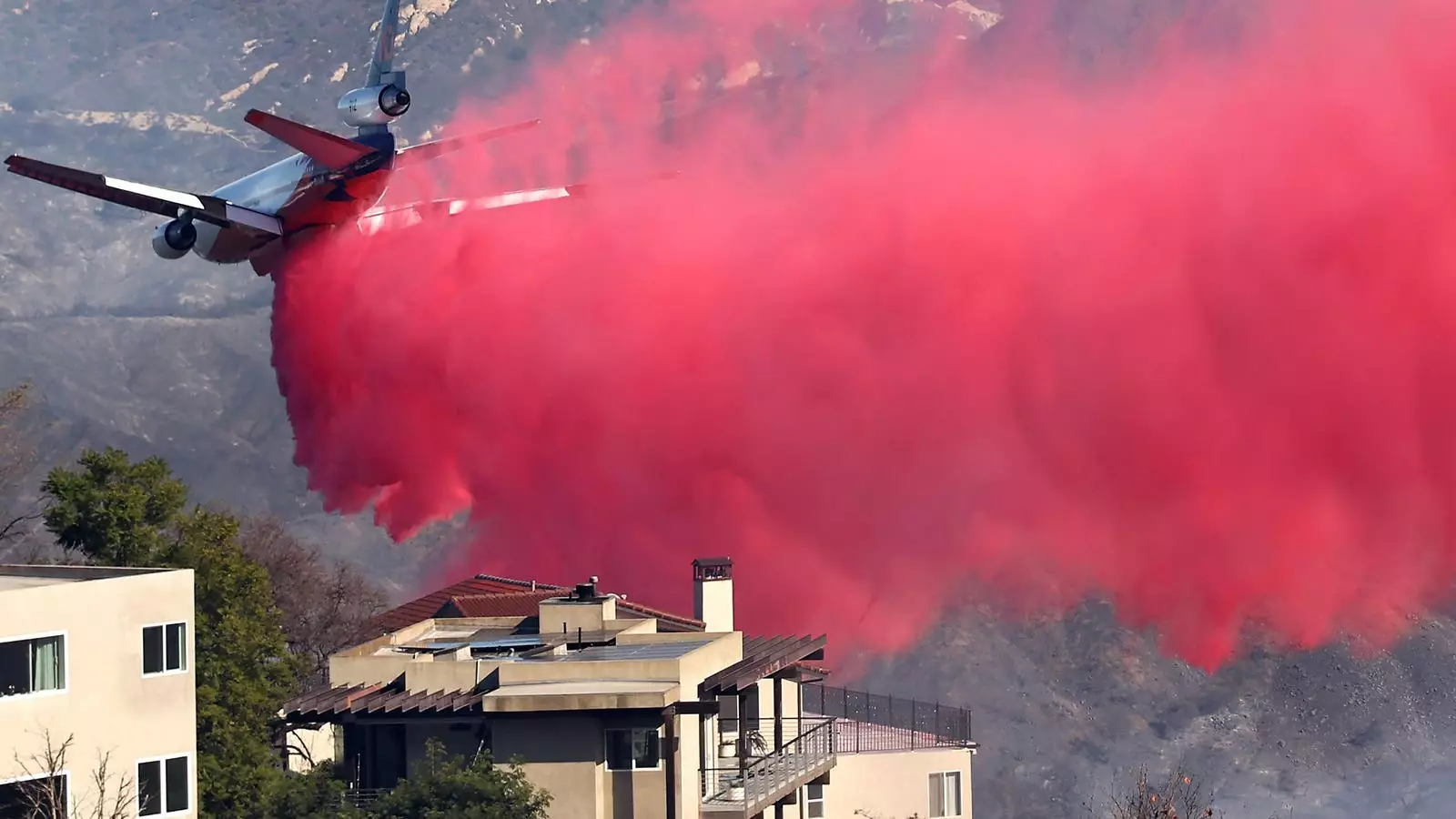The devastating wildfires that have swept through the Los Angeles area recently highlight not only the immediate dangers posed by flames but also the insidious risks they create for food safety. According to the USDA, wildfires can lead to contamination of food items in households, even those situated far from the blaze’s direct path. Smoke and particulates released during wildfires can drift vast distances, affecting air quality and potentially contaminating food sources up to 14 miles away or beyond. This phenomenon raises awareness of an often overlooked aspect of wildfire disasters and emphasizes the need for individuals to be vigilant regarding the safety of their food supplies.
Wildfires, particularly those exacerbated by strong Santa Ana winds and prolonged drought conditions, are becoming increasingly common in California. The destruction caused by these fires is not just physical; it leaves behind a complex web of chemical contaminants that can infiltrate homes and food items. Recent statistics reveal that the health risks extend well beyond the immediate fire zone, as smoke from wildfires has been shown to travel hundreds of miles from the source. Thus, even those who are not living next to a wildfire site must be aware of the potential dangers.
The toxicological profile of wildfire smoke is troubling, comprising various harmful substances, including particulate matter and hazardous gases. Most alarming is the presence of PM2.5 particles, which represent over 90% of wildfire smoke mass. These ultra-fine particles can penetrate deep into the lungs and are small enough to contaminate various types of food packaging. Items such as plastic wrap, cardboard boxes, and screw-top containers are especially susceptible to these pollutants, and once food is contaminated, it becomes nearly impossible to disinfect it adequately.
Reports indicate that air quality in areas affected by wildfires can drop dramatically, with levels of fine particulate matter hitting 40 to 100 micrograms per cubic meter—far exceeding the World Health Organization’s safety recommendations. With health risks connected to fine particulate smoke exposure—including respiratory diseases and food poisoning caused by inhaled pathogens—it’s clear that wildfire smoke poses a significant threat not only to individuals’ health, but also to the safety of food supplies.
As the Los Angeles Department of Public Health has advised, precaution is key in instances of wildfire smoke presence. Plastic water bottles tainted by ash should be discarded, as their caps can harbor harmful contaminants. Moreover, any food that has been exposed to ash and is not stored in waterproof or airtight containers should similarly be thrown out. This calls for consumers to be aware of their storage habits; glass and metal cans can often be salvaged after cleaning, but porous and flexible materials like cardboard and plastic wrap are far less forgiving when it comes to contamination.
Financial limitations aside, food safety must remain a priority in times of crisis. Discarding perishable items kept under unsafe temperature conditions can prevent foodborne illnesses, yet it involves evaluating what remains consumable amid uncertainty. Guidelines from food safety experts recommend throwing out items that exhibit signs of contamination, be it visible ash or foul odors, due to the risks posed by airborne pathogens and food spoilage.
The implications of wildfires extend beyond immediate physical damage and food safety concerns— they serve as a stark reminder of the fragility of our entire food systems amidst climate change. As natural disasters increase in frequency and severity, there emerges a pressing need for robust emergency preparedness strategies that account for food safety in the wake of such catastrophes. Research indicating that wildfire smoke could facilitate the spread of pathogenic bacteria and fungi raises the urgency for public health initiatives focusing on environmental impacts.
Community leaders and policymakers must prioritize disaster readiness that encompasses clear guidance on food safety during wildfires. Together, citizens, government agencies, and food safety organizations can work toward developing strategies that not only mitigate risks in times of crisis but also encompass educational components on food storage and safety protocols. By doing so, we contribute toward minimizing the long-term health ramifications associated with climate-related disasters.
As over 200,000 individuals have already been displaced by destructive wildfires in Los Angeles, it is essential to recognize the multifaceted consequences these events carry—particularly regarding food safety. The ongoing crisis underscores the critical need for immediate and long-lasting solutions to protect both public health and environmental sustainability. Through collaborative efforts and individual vigilance, we can better safeguard our food systems and ensure that they remain resilient in the face of growing climate-related threats.

